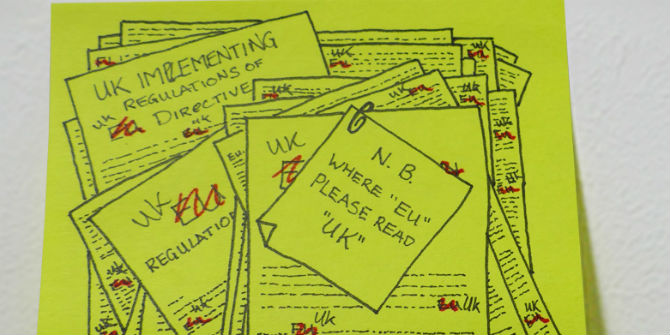 The preamble to the Treaty of Rome (1957), the international agreement that was the beginning of the EU, says that the signatories are “determined to lay the foundations of an ever-closer union among the peoples of Europe”. As it transpires, this has turned out to be a highly controversial sentence. David Cameron’s successful EU negotiations expressly sought to exclude the UK from this. Millicent Ragnhild Scott, who took part in the expert proceedings on the matter, in the LSE Commission on the Future of Britain in Europe, explains why.
The preamble to the Treaty of Rome (1957), the international agreement that was the beginning of the EU, says that the signatories are “determined to lay the foundations of an ever-closer union among the peoples of Europe”. As it transpires, this has turned out to be a highly controversial sentence. David Cameron’s successful EU negotiations expressly sought to exclude the UK from this. Millicent Ragnhild Scott, who took part in the expert proceedings on the matter, in the LSE Commission on the Future of Britain in Europe, explains why.
I’ve often wondered if those who choose this sentence to criticise have simply not read the Treaty of Rome. It’s the very first sentence of an 80-page treaty and is but one of eight statements to underpin the agreement. Be that as it may.
But what does it mean?
What I personally understand by “ever-closer union of peoples” is a statement of the broad intent of the signatories to agree to the peoples of Europe cooperating, rather than fighting.
The concept, as I see it, is one that is in opposition to war. The leaders signing the treaty, including HM Queen Elizabeth II, had lived through two world wars in Europe where millions died and colossal damage was caused to the economies, societies and infrastructure of their countries. This treaty however sought to establish a context for peacetime. A context of co-design and co-occupation; of a shared and networked continent. It is not simply an intergovernmental agreement, but intends to lay the foundations of the closer collaboration of their peoples – for example through trade relations.
The statement is intended to draw attention to the similarities of the peoples of Europe, rather than to the divisions, falsely created and magnified by wartime.

I believe that the “peoples” which they seek to bring into ever closer union is intended to mean the citizens of the nation states of the signatories to the treaties; however, it does not specify whether the statement also includes those who identify as non nation state identities as a “people” (eg Scottish or Flemish) and/or those who identify as pan-national (eg Jews, Francophones or South Slavs).
To my mind, in the wake of world war two, the “peoples” refers to all to whom Europe (or the geographical areas within the national borders of the signatories) is home. Thus the peoples of Europe includes the nationals of the nation states, but also the Jewish people, Gypsy people etc. to whom these territories are home. This will have been significant in the aftermath of the second world war.
This, I believe to be the spirit in which the document is written.
Note: This article gives the views of the author, and not the position of BrexitVote, nor of the London School of Economics. Image credit.
Millicent Ragnhild Scott is a LSE alumna and now director of an international NGO. Twitter @MissMillicent







You people on the continent start the wars in Europe not us. NATO has put paid to any wars since WW2 not the EU. The UK plays not part in the stability of the Continent by membership of the EU as we have no impact in how the EU is run other than handing over a good wedge of the money you spend on running it. If you want to listen to common sense you wouldn’t have installed Juncker as senior President, you all voted for this clown every single one of you. We pay your bills, defend your skies & shipping lanes & you abuse us at every opportunity leeching off our tax payers. Good luck you do what you want but do it without us!
What is meant by “Ever closer union” is what it has meant & what has been done in its name in the years since the Treaty of Rome.
What has been done in its name is what it means.
A united political Europe is the only interpretation.
To wriggle around elsewhere is despicable sophistry.
“Ever closer union” means the establishment of a superior European government, a Supreme European Court, the erasing of national borders, national Parliaments will become nothing more than regional governments, the eventual blending of cultures to slowly become a mono-culture, etc… In other words, it will look like an Empire. So it begs the question, it was Nationalism that ended the concept of Empire, which also dwindled the power of globalists (ex. bankers); so why would any average UK citizen want this?
A piece with most paragraphs starting in the manner of “What I personally understand…”, “The concept, as I see it…”, “I believe that…” and “To my mind…” is going to have to rely almost wholly for its credibility on the reader trusting to the judgement of the writer. And when that writer tries to claim that Queen Elizabeth II (born 1926), “lived through two world wars”, that trust may not be wholly forthcoming. Negligible tosh.